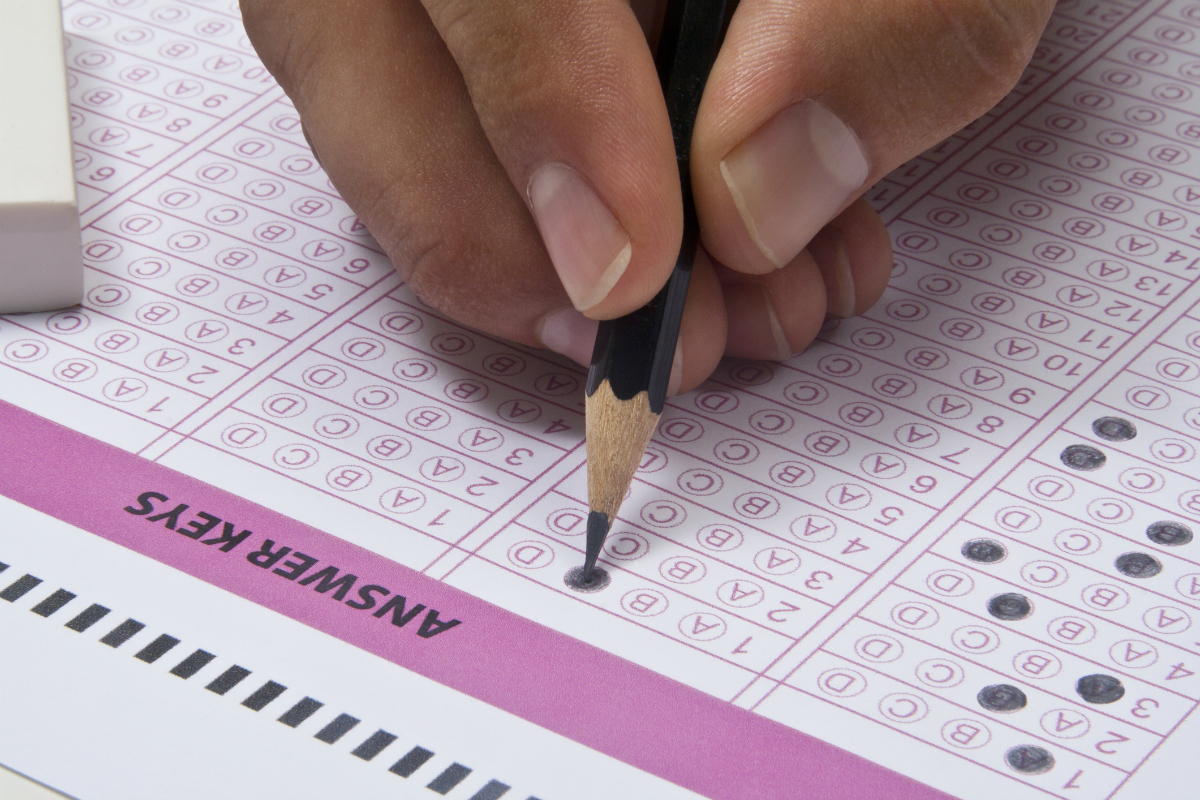By Jeremy Anderson, CSBA Principal Research Manager
The California Department of Education (CDE) recently released the results of the 2023–24 California Assessment of Student Performance and Progress (CAASPP). This is the fourth release since the state lifted testing requirements during the pandemic. CDE celebrated these results because some student groups saw positive progress that outpaced statewide averages in math and English language arts (ELA). There was notable improvement in some areas, particularly for some groups of historically disadvantaged students in certain assessments. However, the statewide improvement was exceptionally modest, and achievement gaps across student groups remain consistent.
Statewide average
California participates in the Smarter Balanced assessment coalition, encompassing 11 states and territories. Smarter Balanced is the system of computer-based ELA and mathematics assessments that California students take. Student performance is categorized using four levels, each addressing grade-level content and measuring associated knowledge and skills.
Level 1 demonstrates inconsistent grade level knowledge and skills, 2 shows foundational grade level understanding, 3 is proficient grade level comprehension and 4 proves advanced grade level attainment. For the public, the CDE reiterated that the scores do not measure whether students are at grade level but rather the level of mastery of grade-level content.
When looking at the Smarter Balanced assessment results for 2023–24, there were exceedingly modest gains across all student groups in mathematics, with 35.54 percent of students meeting or exceeding standards. This represents a 0.9 percentage point increase statewide from 2022–23. The most noteworthy gains were seen by socioeconomically disadvantaged students (a 2-point increase), Hispanic or Latino students (a 1-point increase) and Black students (a 0.85-point increase).
ELA scores were largely flat from their 2022–23 levels with 47 percent of students meeting or exceeding standards, an increase of a third of a percentage point. Increases for socioeconomically disadvantaged, Hispanic or Latino and African American students outpaced the state in ELA. Most groups did not gain or lose more than a percentage point. The exception is with socioeconomically disadvantaged students, who gained 1.5 points. Students with disabilities also saw modest gains in both ELA (0.05 points) and math (0.2 points) statewide.
The largest statewide gain was in the California Science Test, with 30.18 percent of students meeting or exceeding standards in 2022–23 to 30.7 in 2023–24, a gain of 0.52 points. This increase is held across many student groups. African American (0.81 points), American Indian or Alaska Native (0.96 points), and Hispanic or Latino (0.7 points) students all saw increases higher than that of the state. Foster youth (0.95 points) and socioeconomically disadvantaged students (1.41 points) also saw notable increases year over year.
Achievement gaps
While African American and Hispanic or Latino students saw gains compared to all students in the state, the achievement gap between these students and white and Asian students only slightly decreased. CDE has described these groups’ progress as “accelerated,” but only in comparison to the modest gains by all students statewide. California has perennially had issues providing historically disadvantaged students with the resources necessary to help them meet curricular standards. This issue has persisted in the scores from the state’s assessments for at least the past decade.
African American students saw increases in both ELA (0.49 percentage points) and in mathematics (0.86 percentage points). While that represents positive progress, it still means that about 119,000 of the 144,203 African American students tested in math did not meet the standard. When looking at the state’s largest student population, Hispanic or Latino students, 37 percent met or exceeded standards in ELA and 24 percent in math. That means that about 1.2 million Hispanic students in math and about 1 million in ELA, out of the state’s 1.6 million Hispanic or Latino students tested, also did not meet the standard the state has set for student performance.
Achievement gaps among student groups have barely budged over the past 10 years. This was true even before the pandemic among California’s highest- and lowest-scoring student groups. There was a slight tightening in 2021 mainly because all student groups other than African American students saw score declines post-pandemic. Additionally, 2021–22 scores should be analyzed cautiously, as participation and test delivery were inconsistent coming out of the pandemic.
There have been some encouraging results in achievement gap reduction, however. For instance, the gap between Hispanic or Latino and white students in ELA has closed by five percentage points since 2019. But by and large, gaps between the highest and lowest-scoring students have barely closed by one percentage point since 2022. Since 2019, the gap between African American and white students has stayed around 30 percent in both ELA and math. Gaps between African American and Asian students for ELA was 44 percent in 2019 and is 43 percent in 2023–24. In math, the gap was 53 percent in 2019 and 52 percent today. The gap between Hispanic and white students in math was 28 percent in 2019 and is 24 percent today. The gap between Hispanic and Asian students in ELA is 37 percent and in math is 46 percent. In 2019, that was 40 percent in ELA and 48 percent in math.
Vulnerable student group scores
Some of the state’s most vulnerable student groups — foster youth, students experiencing homelessness, socioeconomically disadvantaged students, English learners and students with disabilities — continue to experience large gaps with peers in ELA and math.
The percent of students meeting or exceeding standards in math was 16.32 percent for students experiencing homelessness, 11.15 percent for foster youth, 12.54 percent for students with disabilities and 10.25 percent for English learners. All of these groups saw increases in the percentage of students who met or exceeded the standards in mathematics, but none of these groups outpaced the state average. Foster youth showed the most growth year over year at an increase of 0.68 percentage points. The percent of students meeting or exceeding standards in ELA was 25.85 percent for students experiencing homelessness, 19.92 percent for foster youth, 15.83 percent for students with disabilities and 10.29 percent for English learners. English learners who met or exceeded the standard fell by 0.58 percentage points in ELA from 2023–24.
Moving forward
CDE will be releasing additional indicators for the California Dashboard by Dec. 1. The Dashboard includes chronic absenteeism, graduation rates, college and career readiness indicators and more. That data will give the state a more holistic understanding of student progress and performance. Until then, the current test score release indicates that much more must be done to help historically disadvantaged students. In response to the release of this year’s test score data and how the Smarter Balanced tests differ from other states, State Board of Education President Linda Darling Hammond wrote, “The states that created and use these assessments believe that when students are asked to learn and show higher-order skills, they are better prepared for later schooling and life.”
While that may be true for some of the state’s students, it also belies the point that more than half of all students and 70-80 percent of historically disadvantaged students are not achieving these higher-order skills. While the state has attempted to enact a bevy of programs, such as transitional kindergarten and community schools, to help address these disparities, more should be done to address them directly.
This is made more difficult due to California’s high levels of racial and socioeconomic segregation. Decades of resource deprivation have exacerbated the difficulties around addressing achievement gaps. The state could learn from local school districts like Emery Unified School District, Modesto City Schools and Los Angeles USD that enacted programs to raise Black student achievement. Oakland USD specifically addresses Latino student achievement through targeted programs and community partnerships. However, outside influences and an ongoing series of court cases across the country are threatening the efficacy of programs designed to address the needs of some of our most vulnerable students. While this local work is essential, large-scale change should be supported at the state level to move beyond tinkering around the edges. Without that support, California will continue to fail its historically disadvantaged students, and gaps will persist.
Emery USD and Modesto City Schools will be featured on a panel at CSBA’s Annual Education Conference and Trade Show on Friday, Dec. 6, at 9 a.m. at the Anaheim Convention Center.





